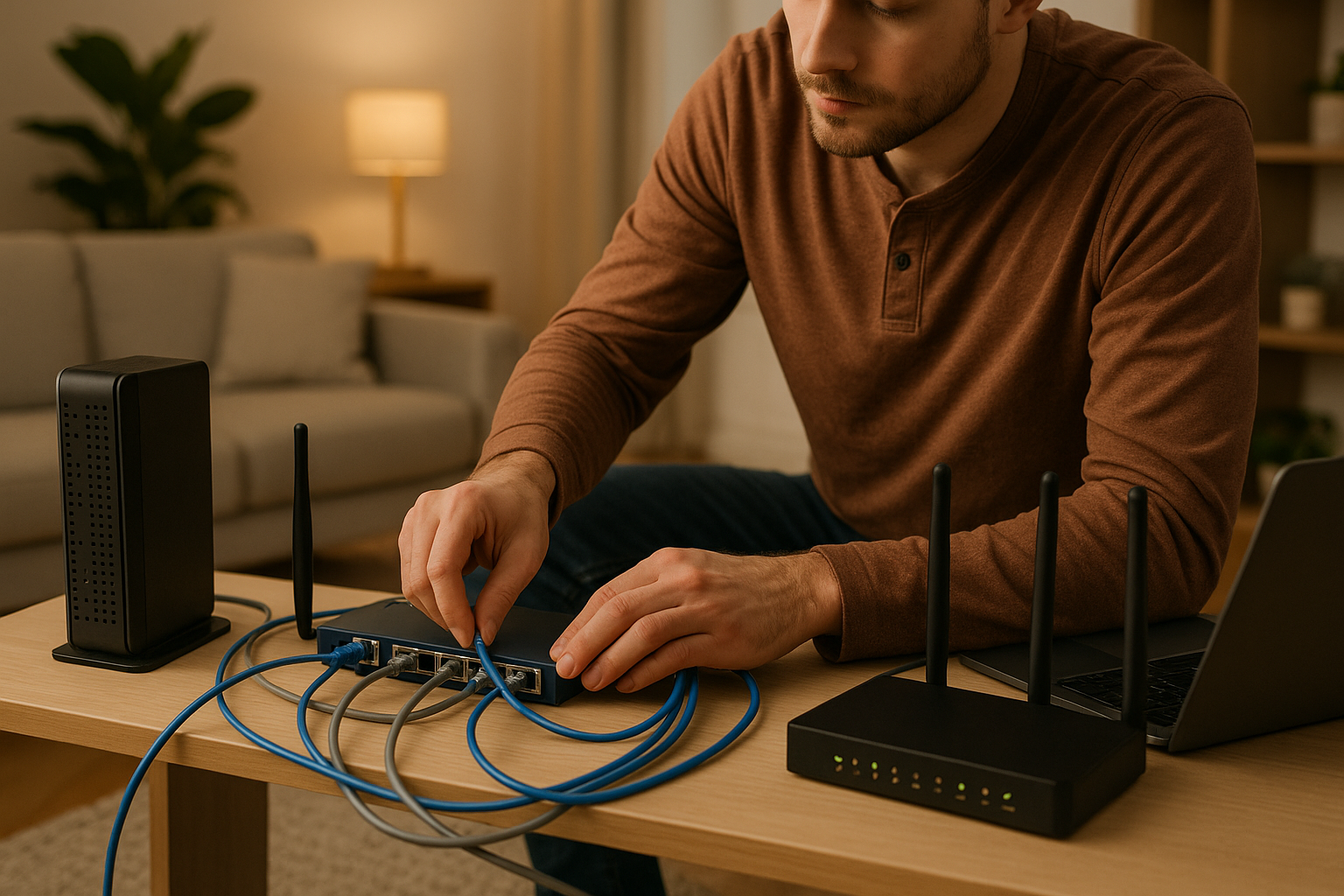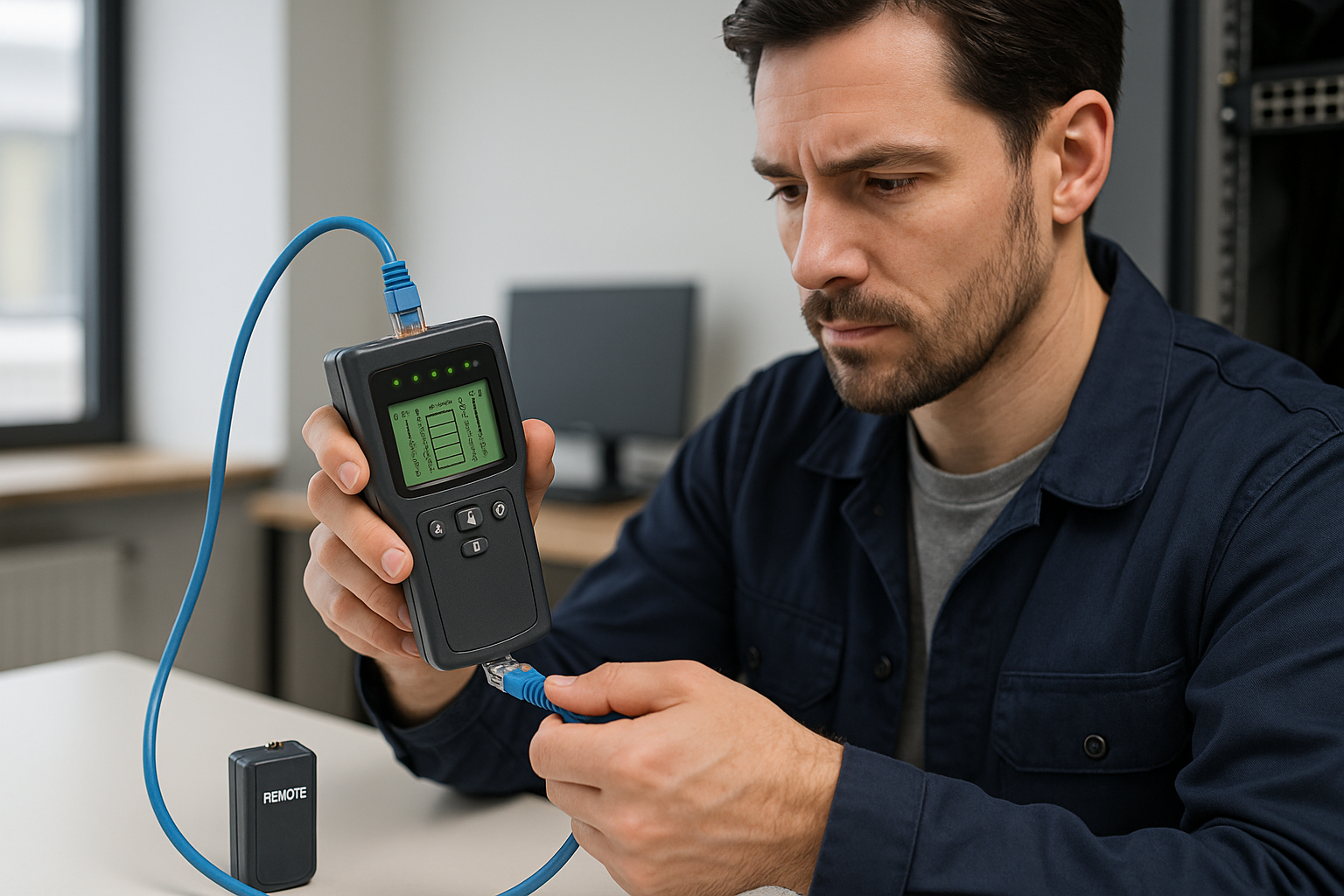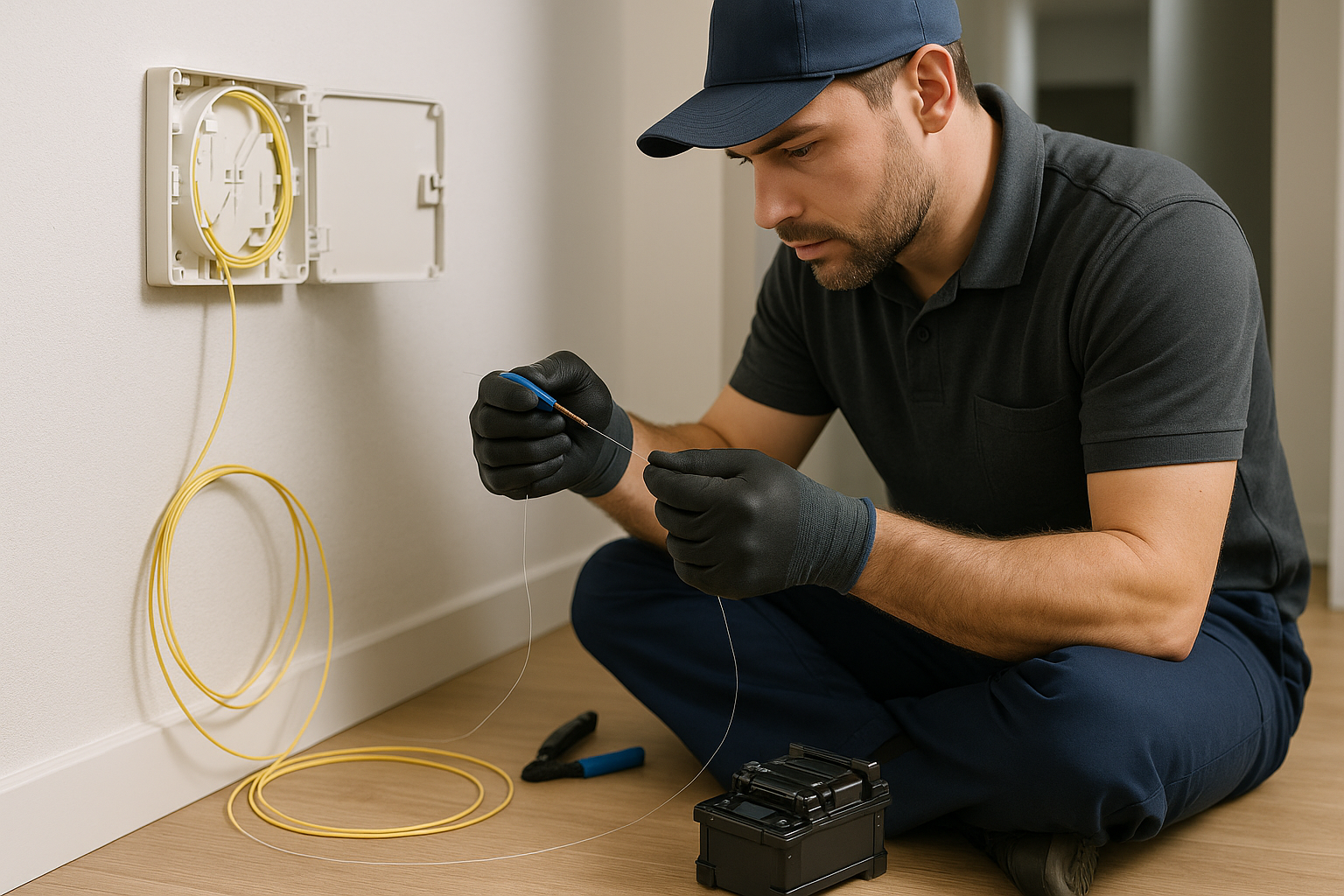Which network cable do I need?
- , by Jarno Heideman
- 4 min reading time

Do you want to use the internet via a fixed cable? Then you use network cables. Netwerkkabel.eu explains the differences in network cables based on different speeds and bandwidths.
Which network cable do I need?
Another word for a UTP cable is a network cable. Do you want to use the internet via a fixed cable? Then you use network cables. Netwerkkabel.eu explains the differences in network cables based on different speeds and bandwidths.
Overview of differences between network cables
��
| Cable type | Speed | Bandwidth |
| Cat5e | 1 gigabit | 100mHz |
| Cat6 | 1 gigabit | 250mHz |
| Cat6a | 10 gigabits | 500mHz |
| Cat7 | 10 gigabits | 1500mHz |
| Cat8 | 40 gigabits | 2000mHz |
| Designation | Cable shielding | Wire pair shielding |
| U/UTP | no | no |
| U/FTP | no | foil |
| F/UTP | foil | no |
| S/FTP | wickerwork | foil |
| SF/UTP | foil, wickerwork | no |
You can also choose from a solid copper network cable or a so-called CCA cable. CCA stands for Copper Clad Aluminum. This means that the cable has an aluminum core. At first glance it is difficult to tell what a CCA cable is.
The advantage of a CCA cable is that the purchase price is many times cheaper than a stiff copper cable. They do have some disadvantages, such as:
- Flexibility decreases over time.
- The chance of fractures is much greater.
- Resistance is higher if you use it as a power supply (for example PoE).
Internet speed
The Cat5e and Cat6 network cables ensure a maximum internet speed of 1 gigabit. Cat7 network cables are a lot faster and have a maximum speed of up to 10 gigabit. This means you are well prepared for the future, these network cables are very suitable for higher speeds and fiber optic.
Bandwidth
Bandwidth is the maximum data transfer rate that can be sent over a channel per unit time. This is usually expressed in Hertz or bits per second.
The Cat5e has a bandwidth of 100 megahertz, the Cat6 has a bandwidth of 250 megahertz, the Cat6a has a bandwidth of 500 megahertz and the Cat 7 has a bandwidth of at least 600 megahertz, which can go up to as much as 1500 megahertz. The higher the bandwidth, the more applications or computers will have a more optimal result. We recommend a Cat7 cable for good quality audio playback.
stranded or stiff?
Good, you now know which category you want and to what extent your cable should be shielded. Then the question remains for many: do I need a stranded cable or a stiff one? What is the difference?
Stiff
Stiff cables are also called installation cables. You use this when you need to connect a fixed/permanent cable; for example on a wall socket or patch panel. This is only possible with a stiff cable.
Keep an eye on:
- Stiff cables are less stranded and cannot be bent into right angles
- Connectors can be mounted on stiff cables, but these must be connectors that are suitable for stiff cables
Supple
The advantage of stranded cables is their flexibility: unlike a stiff cable, you can bend them in all possible bends. However, a stranded cable is not suitable for mounting on LSA strips. stranded cables are intended for attaching connectors to both ends of the cable. Fortunately, nowadays there are also special keystones that you can mount on stranded cables, but you have to pay attention to this; In general, most keystones are only intended for stiff cables.
So please note:
- stranded cables cannot be mounted on LSA strips (these are on wall sockets and patch panels)
- stranded cables cannot always be fitted to keystones; You need special keystones that are suitable for this.
Can you make a choice? Go quickly to our webshop for all our cables on a roll !
Tags
Related categories
Check out our other blogs
-

, by Jarno Heideman How do you easily set up a home network yourself?
-

, by Jarno Heideman What are the color codes of UTP cables and how do you use them correctly?
-

, by Jarno Heideman How do you test a UTP cable without making mistakes?
-

, by Jarno Heideman How do you connect fiber optic yourself without any hassle at home?



